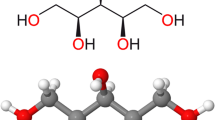Abstract
In the present work, toothpastes were prepared for preventing dental caries and periodontal diseases. Nine formulations (TN1 to TN9) were prepared using neem extract and turmeric powder as active principles. These prepared formulations were evaluated for homogeneity, spreadability, fineness, pH, foaming power, tube extrudability, and stability as per the guidelines of the Bureau of Indian Standards and in-vitro antimicrobial activity. The in-vitro antimicrobial activity studies were performed using standard strains such as Candida albicans (ATCC No. 10231), Streptococcus mutans (MTCC No. 497) and Porphyromonas gingivalis (oral gingival swab). A comparative evaluation of the promising toothpaste formulations against selected marketed toothpastes was also carried out. Among the nine prepared formulations TN1 to TN9 (different concentrations of neem and turmeric powder), formulation TN3 (toothpaste containing 0.5% of neem extract and 0.9% of turmeric powder) has shown promising results (inhibition zone diameters of 23.5, 22.5 and 19.5 mm respectively against C. albicans, S. mutans and P. gingivalis). TN3 emerged as the overall best formulation indicating their potential usefulness in preventing various dental problems.
Similar content being viewed by others
References
Petersen PE, Bourgeois D, Ogawa H, Estupinan-Day S, Ndiaye C (2005) The global burden of oral diseases and risks to oral health. Bull World Health Organ 83:661–669
Petersen PE (2003) The world oral health report continuous improvement of oral health in the 21st century—the approach of the WHO global oral health programme. Commun Dent Oral Epidemiol 31:3–24
Rautemaa R, Lauhio A, Cullinan MP, Seymour GJ (2007) Oral infections and systemic disease—an emerging problem in medicine. Clin Microbiol Infect 13:1041–1047
Yeo BK, Lim LP, Pquette DW, Williams RC (2005) Periodontal disease: the emergence of a risk for systemic conditions, pre-term low birth weight. Ann Acad Med 34:111–116
Petersen PE (2005) The burden of oral disease: challenges to improving oral health in the 21st century. Bull World Health Organ 83:3–8
Jenkinson HF, Lamont RJ (2005) Oral microbial communities in sickness and in health. Trends Microbiol 13:589–595
Loesche W (2007) Dental caries and periodontitis: contrasting two infections that have medical implications. Infect Dis Clin North Am 21:471–502
Tichy J, Novak J (1998) Extraction, assay, and analysis of antimicrobials from plants with activity against dental pathogens (Streptococcus sp.). J Altern Complement Med 4:39–45
Park KM, You JS, Lee HY, Beak NI, Hwang JK, Kuwanon G (2003) An antibacterial agent from the root bark of Morus Alba against oral pathogens. J Ethnopharmacol 84:181–185
Chung JY, Choo JH, Lee JH, Hwang JK (2006) Anticariogenic activity of macelignan isolated from Myristica fragrans (nutmeg) against Streptococcus mutans. Phytomedicine 13:261–266
Bidault P, Chandad F, Grenier D (2007) Risk of bacterial resistance associated with systemic antibiotic therapy in periodontology. J Can Dent Assoc 73:721–725
Knoll-Koehler E, Stiebel J (2002) Amine fluoride gel affects the viability and the generation of superoxide anions in human polymorph nuclear leukocytes: an in vitro study. Eur J Oral Sci 110:296–301
Rodrigues F, Lehmann M, Amaral VS, Reguly ML, de Andrade HHR (2007) Genotoxicity of three mouth wash products, Cepacol, Periogard, and Plax, in the Drosophila wing-spot test. Environ Mol Mutagen 48:644–649
Prabu GR, Gnanamani A, Sadulla S (2006) Guaijaverin—a plant flavonoid as potential antiplaque agent against Streptococcus mutans. J Appl Microbiol 101:487–495
Kim HS (2005) Do not put too much value on conventional medicines. J Ethno Pharmacol 100:37–39
Cowan MM (1999) Plant products as antimicrobial agents. Clin Microbiol Rev 12:564–582
Kalemba D, Kunicka A (2003) Antibacterial and antifungal properties of essential oils. Curr Med Chem 10:813–829
Vanka A, Tandon S, Rao SR, Udupa N, Ramkumar P (2001) The effect of indigenous Neem Azadirachta indica mouth wash on Streptococcus mutans and lactobacilli growth. Indian J Dent Res 12:133–144
Chaturvedi TP (2009) Uses of turmeric in dentistry: an update. Indian J Dent Res 20:107–109
Swamy RP, Gopalakrishnakone P (2010) Therapeutic potential of plants as antimicrobials for drug discovery. eCAM 7:283–294
Sharma S, Agarwal SS, Prakash J, Pandey M, Singh A (2014) Formulation development and quality evaluation of polyherbal toothpaste orals. Int J Pharm Res Allied Sci 3:30–39
Biswas B, Kimberly R, Fredrick Mc L, Daniels D, Yadav A (2013) Antimicrobial activities of leaf extracts of guava (Psidium guajava L.) of two gramnegative and gram-positive bacteria. Int J Microbiol 1:1–7
Mangilal T, Ravikumar M, Mangilal T (2016) Preparation and evaluation of herbal toothpaste and compared with commercial herbal toothpastes: an invitro study. Int J Ayurveda Herbal Med 6:2251–2266
Moynihan P, Petersen PE (2004) Diet, nutrition and the prevention of dental diseases. Public Health Nutr 7:201–226
Acknowledgements
This research did not receive any specific grant from funding agencies in the public, commercial, or not-for-profit sectors.
Author information
Authors and Affiliations
Corresponding author
Ethics declarations
Conflict of interest
All authors declare that they have no conflict of interest.
Additional information
Significance statement
Dental caries and periodontal diseases are the major oral health problems in the world. Toothpaste preparation containing herbs plays very important role in the prevention and treatment of various dental and periodontal diseases. Present study data suggests that use of herbs like turmeric and neem in the toothpaste preparation is effective solution for such oral health problems.
Rights and permissions
About this article
Cite this article
Chandakavathe, B.N., Deshpande, D.K., Swamy, P.V. et al. Assessment of Toothpaste Formulations Containing Turmeric and Neem Extract for Prevention of Dental Caries and Periodontal Diseases. Proc. Natl. Acad. Sci., India, Sect. B Biol. Sci. 88, 1523–1529 (2018). https://doi.org/10.1007/s40011-017-0897-1
Received:
Revised:
Accepted:
Published:
Issue Date:
DOI: https://doi.org/10.1007/s40011-017-0897-1




